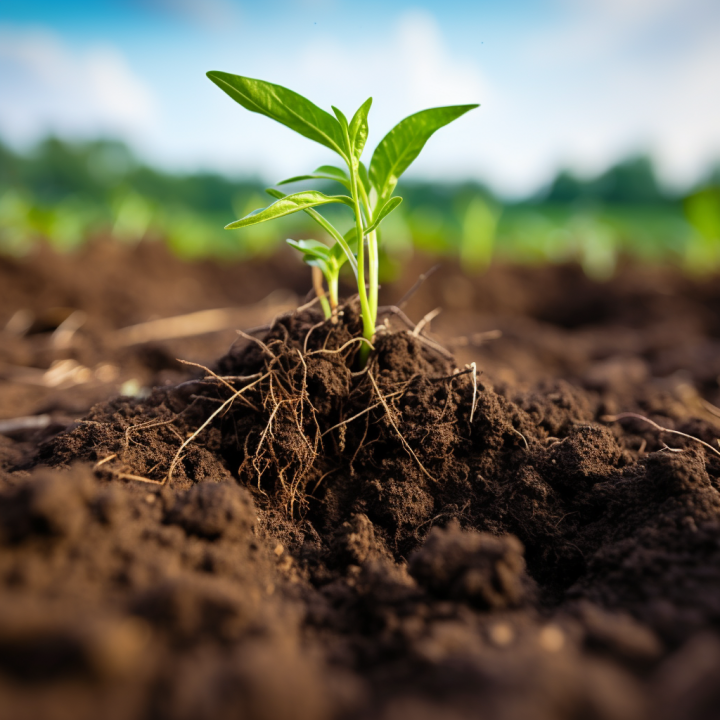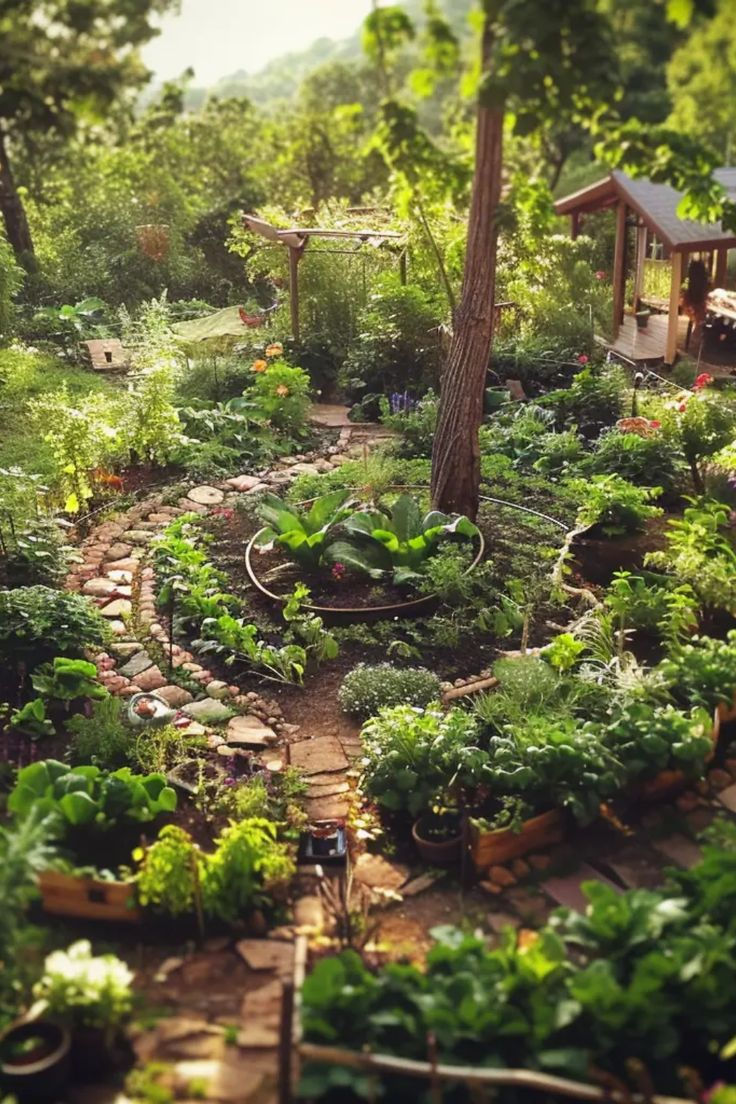Revitalize Your Garden with a Healthy Soil Food Web
- benmcneilly
- Jan 24
- 6 min read
Updated: Jun 26
When you think about a healthy garden, what comes to mind? Lush plants, vibrant flowers, and bountiful vegetables? But have you ever thought about the underground world that makes all of this possible? Beneath our feet lies a complex ecosystem teeming with life—the soil food web. It's the hidden, yet vital, network that sustains plant growth, supports biodiversity, and keeps the soil healthy.
As gardeners, we have the power to foster this dynamic environment, leading to healthier plants and a thriving garden. But how do we tap into this underground force? Let’s take a journey into the soil food web and explore why it’s so important and how you can nurture it for the benefit of your garden.
"The health of our soils is the foundation of the health of everything that grows on them." — Dr. Elaine Ingham
What is the Soil Food Web?
The soil food web might sound like a scientific term, but it’s something every gardener interacts with, whether they realize it or not. In simple terms, the soil food web is the interconnected network of organisms that live in the soil, all playing vital roles in breaking down organic material, cycling nutrients, and supporting plant health.

Think of the soil food web as a community of tiny creatures working together, each contributing to a healthy and productive garden. It’s not just about microorganisms like bacteria and fungi—there are larger creatures like earthworms and beetles, too. All of these organisms create a balanced, thriving ecosystem beneath our feet.
At its most basic, the soil food web is made up of several key components:
Microorganisms: Tiny but mighty, these creatures are responsible for breaking down organic matter and recycling nutrients.
Macroorganisms: These include earthworms, ants, and other larger soil dwellers. They help aerate the soil and move organic matter deep into the earth.
Plants and Roots: Plants and their roots interact with the soil organisms to create a mutual exchange of nutrients.
Each component in the soil food web relies on the others, creating a delicate balance that supports plant growth and overall soil health. When this balance is disturbed—say, through overuse of chemicals or poor soil management—the entire system can be affected, leading to less fertile soil and weaker plants. So, understanding and caring for the soil food web is key to creating a thriving, sustainable garden.
The Role of Soil Microorganisms in Soil Health
You may not see them, but microorganisms are the true superheroes of the soil food web. These invisible creatures are responsible for breaking down organic matter and making nutrients available to your plants. Without them, our gardens would be much less productive. Let’s take a deeper look at how they work:
Bacteria are the first to break down dead plant material. They’re particularly good at converting nitrogen into forms that plants can absorb. This process is crucial for soil fertility and plant growth.
Fungi, particularly mycorrhizal fungi, form relationships with plant roots. These fungi help plants access nutrients like phosphorus and potassium, which are essential for healthy growth. In return, the plants provide the fungi with sugars they need to survive. It’s a perfect example of a symbiotic relationship in nature!
Protozoa and nematodes are less well-known but just as important. They feed on bacteria and fungi, helping release nutrients into the soil. They also play a role in regulating harmful soil pathogens, preventing them from taking over the ecosystem.
The diversity of these microorganisms is key to a healthy soil food web. Just like a balanced diet is essential for human health, a diverse community of soil organisms is essential for soil vitality. By supporting microbial life in your garden, you’re laying the groundwork for healthier plants and stronger ecosystems.
But how do you encourage this biodiversity in your own garden? Let’s take a look at some practical ways you can support the microorganisms that keep your soil healthy.
How the Soil Food Web Improves Soil Health
So why is the soil food web so important for your garden’s health? When the soil food web is functioning at its best, it helps in several crucial ways:
Nutrient Cycling: As microorganisms break down organic matter, they release essential nutrients like nitrogen, phosphorus, and potassium back into the soil. These nutrients are then readily available for plants to absorb and grow. Imagine it like a recycling system that keeps nutrients flowing back into the garden, reducing the need for synthetic fertilizers.
Soil Regeneration: Healthy soil doesn’t just remain static—it regenerates over time. A thriving soil food web can repair and rebuild damaged soil. Microbes help bind soil particles together, creating structure that improves water retention and prevents erosion. A well-structured soil also allows roots to grow deeper, providing plants with access to more nutrients.
Disease Suppression: Healthy soil can fight off diseases. Beneficial bacteria and fungi outcompete harmful pathogens, preventing them from taking over. Think of it like a natural defense system that keeps your plants protected from soil-borne diseases.
Improved Plant Growth: The most obvious benefit of a thriving soil food web is healthier plants. With nutrient cycling and a balanced ecosystem, plants can grow stronger and more resilient. They become better equipped to resist pests and diseases, and they produce higher yields.

A healthy soil food web is a powerful force in your garden. It doesn’t just make the soil fertile—it creates a whole system of support that helps your plants thrive.
Building and Maintaining a Healthy Soil Food Web
So, how can you build and maintain a thriving soil food web in your garden? Here are some practical steps you can take to make sure your soil is teeming with life:
Compost: Composting is one of the easiest ways to introduce beneficial microorganisms to your soil. The decomposed organic matter in compost serves as food for soil organisms, helping to kickstart the soil food web. Add kitchen scraps, leaves, and garden waste to your compost pile, turning it regularly to keep air flowing. Over time, this organic matter will break down and feed your garden’s microorganisms.
Use Organic Mulch: Mulching with organic materials like wood chips, straw, or grass clippings helps retain moisture, protect plant roots, and provide food for soil organisms. As the mulch breaks down, it feeds the soil food web. Not only will it improve soil health, but it will also keep weeds in check and prevent soil erosion.
Avoid Tilling: Tilling disrupts the delicate structure of the soil and damages the organisms living there. Instead, practice no-till gardening or minimal disturbance to maintain the integrity of the soil ecosystem. Charles Dowding’s no-dig gardening method is a great example of how you can create a thriving garden while leaving the soil undisturbed.
Inoculate with Beneficial Microorganisms: Sometimes, you might want to give your soil a boost by adding specific microorganisms. Products like biochar or mycorrhizal fungi inoculants can introduce beneficial microbes that will help your soil thrive. These can be especially useful when starting a new garden or restoring soil that has been overworked.
Encourage Biodiversity: A diverse garden with a variety of plants, including native species, supports a diverse soil food web. The more variety you introduce, the more resilient your garden becomes. Consider planting different types of flowers, herbs, and vegetables to support a wide range of soil organisms.
Common Mistakes and How to Avoid Them
While it’s easy to focus on planting the right crops and managing pests, there are common mistakes that can harm the soil food web. Here’s what to watch out for:
Over-tilling: Tilling disrupts the soil structure and destroys beneficial organisms. Instead, try no-till gardening techniques to preserve the integrity of your soil. If you must till, do so sparingly and only when absolutely necessary.
Using Synthetic Chemicals: Pesticides, herbicides, and synthetic fertilizers can kill soil microorganisms. They may provide a quick fix, but they can also harm the long-term health of your soil. Opt for organic practices to nourish the soil and protect its inhabitants.
Neglecting Organic Matter: Soil needs organic material to sustain the food web. Regularly add compost, mulch, and cover crops to keep the system functioning properly. Without organic matter, the soil will become depleted and less productive over time.
By avoiding these mistakes and focusing on healthy, organic practices, you’ll ensure that the soil food web remains intact and your garden thrives.
Conclusion
The soil food web is the backbone of a healthy garden. By understanding its components and learning how to nurture it, you can transform your garden into a thriving, sustainable ecosystem. Whether you’re new to gardening or looking to improve your existing practices, these steps will help you build a healthier soil food web and enjoy a more fruitful garden.
Ready to start your soil health journey? At Earthling.com, we provide everything you need to nurture your soil and create a thriving, sustainable garden. From plants and seeds to tools and advice, we’re here to help you grow your garden the right way.


Comments